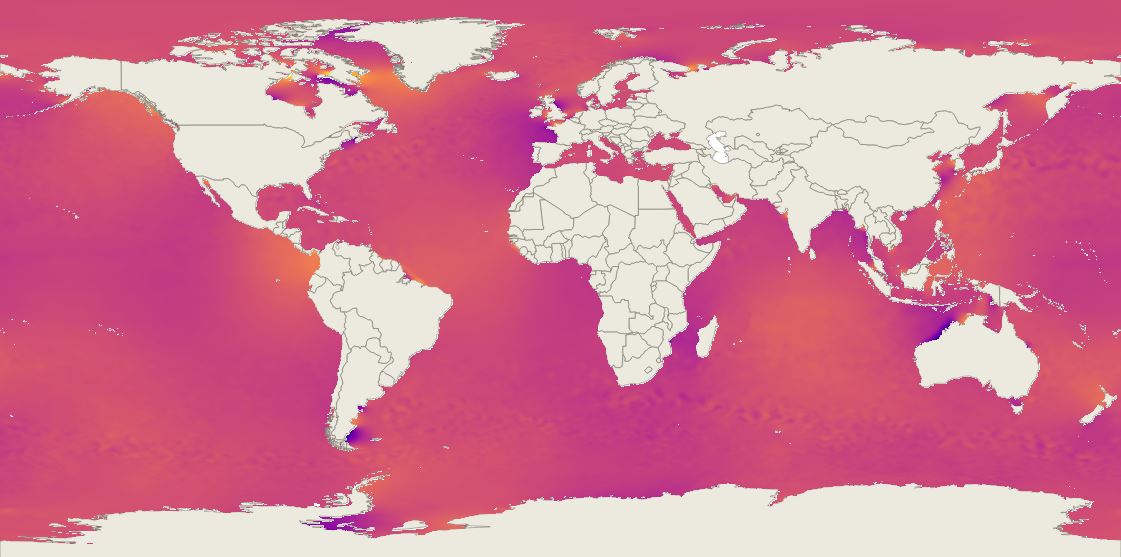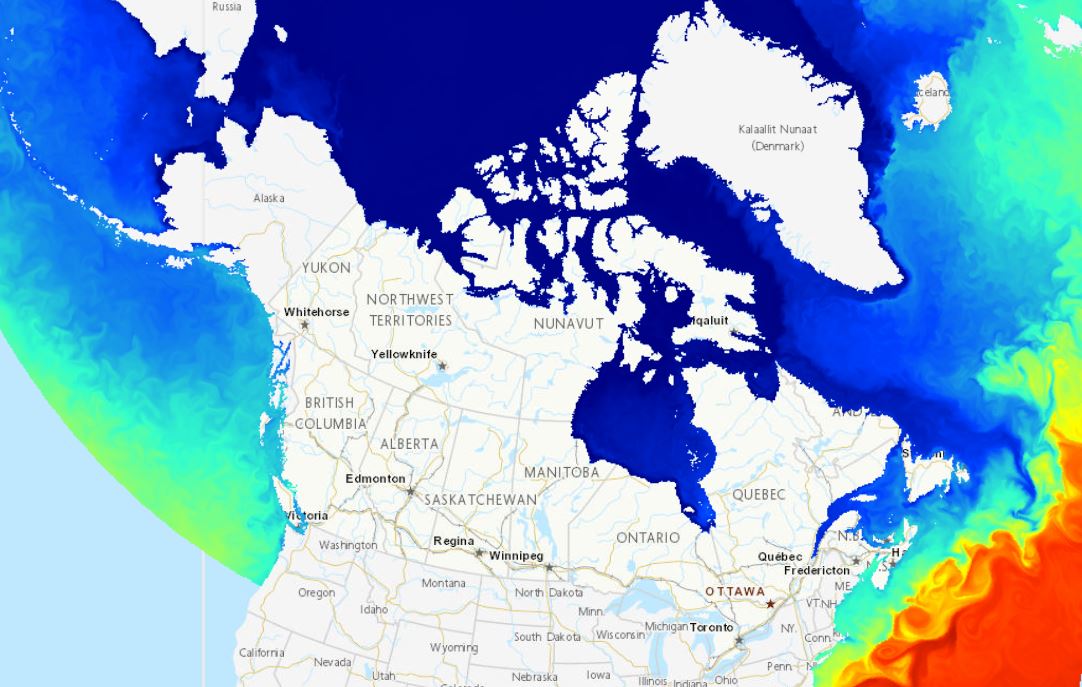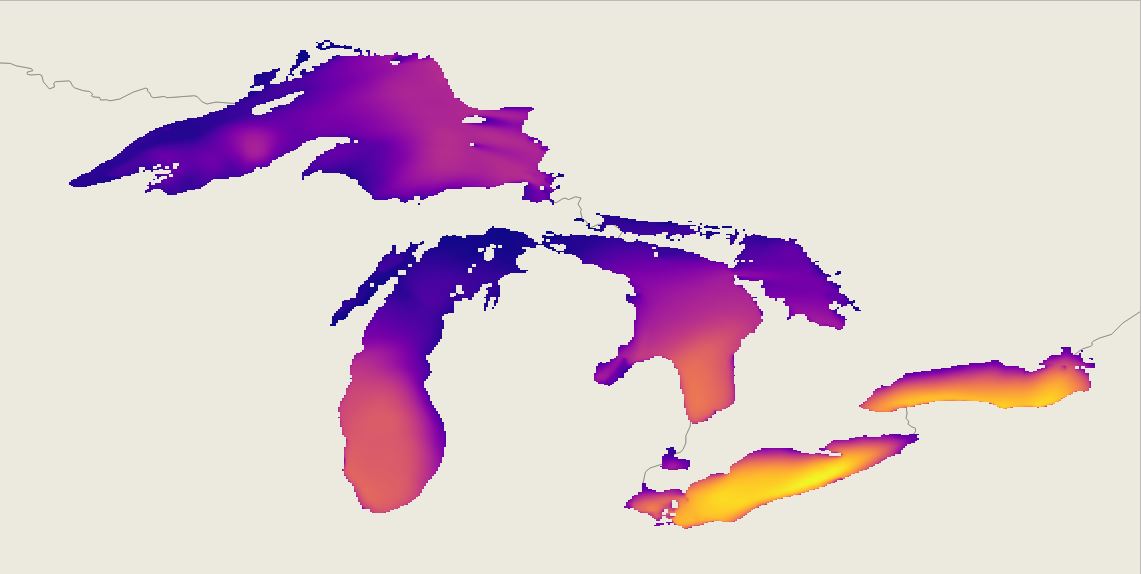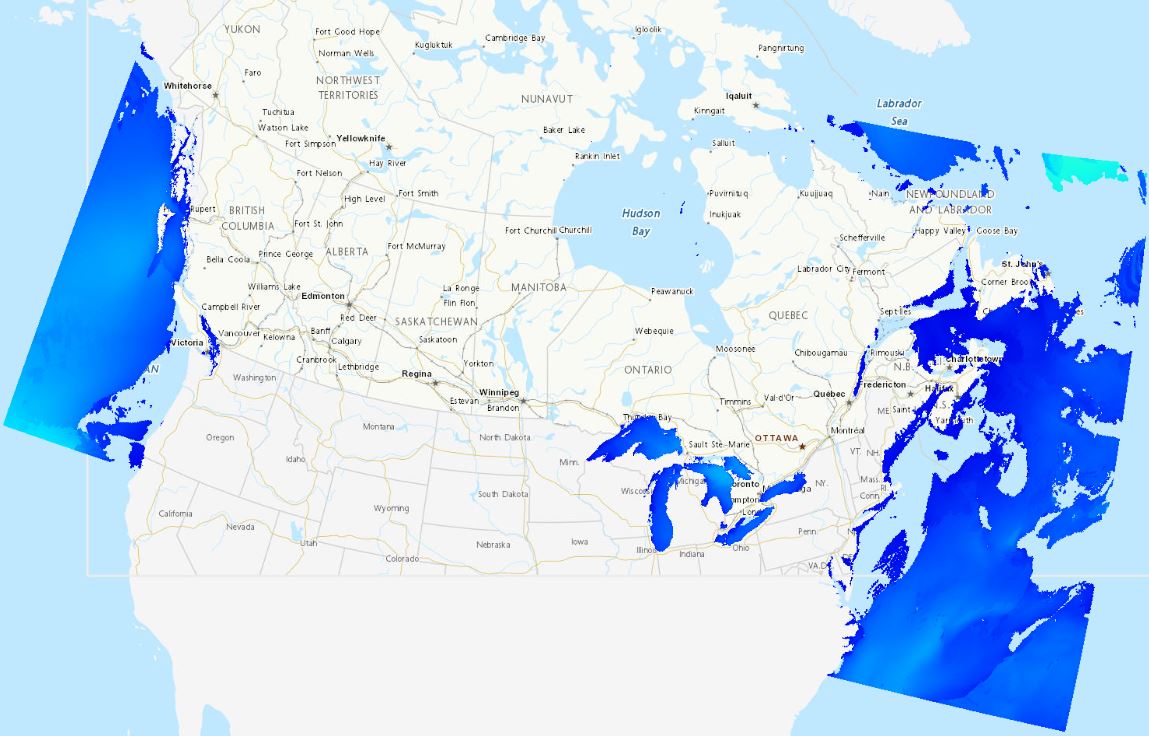Prediction
Type of resources
Topics
Keywords
Provided by
Years
Formats
Representation types
Update frequencies
status
-

The Regional Ensemble storm Surge Prediction System (RESPS) produces storm surge forecasts using the DalCoast ocean model. DalCoast (Bernier and Thompson 2015) is a storm surge forecast system for the east coast of Canada based on the depth-integrated, barotropic and linearized form of the Princeton Ocean Model. The model is forced by the 10 meters winds and sea level pressure from the Global Ensemble Prediction System (GEPS).
-
The High Resolution Deterministic Land Prediction System (HRDLPS) produces high-resolution medium-range forecasts of land surface, subsurface variables, and of near-surface atmospheric variables (1.5 m temperature and dewpoint, 10 m wind). HRDLPS is initialized with analysis and trial fields provided by the Canadian Land Data Assimilation System of the National Surface and River Prediction System (CaLDAS-NSRPS). The system is then driven with atmospheric forecasts provided by the HRDPS over the first two days of integration and by the GDPS over the next four days. Predictions are performed twice a day. The system runs on a grid with a 2.5 km horizontal spacing covering Canada and part of the USA.
-

CaLDAS-NSRPS was installed as an experimental system within the National Surface and River Prediction System (NSRPS) at Environment and Climate Change Canada's (ECCC) Canadian Centre for Meteorological and Environmental Prediction (CCMEP) in July 2019. CaLDAS-NSRPS is a continuous offline land-surface assimilation system, which provides analyses of the land surface every 3 h over the domain of the High-Resolution Deterministic Prediction System (HRDPS) at a 2.5 km grid spacing. The emphasis in CaLDAS-NSRPS is to focus upon the assimilation of satellite based remote sensing observations to provide the optimal initial conditions for the predictive components of the NSRPS, the High Resolution Deterministic/Ensemble Land Surface Prediction System (HRDLPS/HRELPS) and the Deterministic/Ensemble Hydrological Prediction Systems (DHPS/EHPS). CaLDAS-NSRPS is launched 4 times per day, at 0000, 0600, 1200, and 1800 UTC.
-

The Global Deterministic storm Surge Prediction System (GDSPS) produces water level forecasts using a modified version of the NEMO ocean model (Wang et al. 2021, 2022, 2023). It provides 240 hours forecasts twice per day on a 1/12° resolution grid (3-9 km). The model is forced by the 10 meters winds, sea level pressure, ice concentration, ice velocity and surface currents from the Global Deterministic Prediction System (GDPS). The three dimensionnal ocean temperature and salinity fields of the model are nudged to values provided by the Global Ice-Ocean Prediction System (GIOPS) and the GDPS. During the post-processing phase, storm surge elevation (ETAS) is derived from total water level (SSH) by harmonic analysis using t_tide (Foreman et al. 2009).
-

The Regional Ice-Ocean Prediction System (RIOPS) is based on the NEMO-CICE ice-ocean model and produces regional sea ice and ocean analyses and 84 hours forecasts daily based at [00, 06, 12, 18] UTC on a subset of the 1/12° resolution global tri-polar grid (ORCA12). RIOPS assimilates data (gridded CCMEP analysis SST product, SLA from satellite altimetry, in situ observations) using a multivariate reduced order Kalman filter and includes a 3DVar ice concentration analysis (assimilating satellite remote sensing and Canadian Ice Service ice charts). Atmospheric fluxes for 84 hours forecasts are calculated using fields from a blending of the Regional Deterministic Prediction System (RDPS) and the Global Deterministic Prediction System (GDPS).
-

The Regional Deterministic Prediction System (RDPS) carries out physics calculations to arrive at deterministic predictions of atmospheric elements from the current day out to 84 hours into the future. Atmospheric elements include temperature, precipitation, cloud cover, wind speed and direction, humidity and others. This product contains raw numerical results of these calculations. Geographical coverage includes Canada and the United States. Data is available at horizontal resolution of about 10 km up to 33 vertical levels. Predictions are performed four times a day.
-

The Regional Ensemble Wave Prediction System (REWPS) uses the third generation spectral wave model WaveWatch III® (WW3) to arrive at probabilistic predictions of wave elements from the current day out to 3 days into the future. The probabilistic predictions are based on 20 ensemble members and a control member that are forced by the 10 meters winds from the Regional Ensemble Prediction System (REPS). An ice forecast from the Water Cycle Prediction System of the Great Lakes (WCPS) is used by the model to dampen or suppress wave growth in areas covered respectively with 25% to 75% and more than 75% ice. WW3 (WAVEWATCH III® Development Group, WW3DG 2019) is a third generation spectral wave prediction model that solves the evolution of the energy balance equation for the 2-D wave energy spectrum without any prior assumptions on the shape of the spectrum. The WW3 model has been implemented by a growing number of national operational forecasting centres over the last several years. The REWPS data are available on the Great Lakes domain.
-

The Regional Deterministic Wave Prediction System (RDWPS) produces wave forecasts out to 48 hours in the future using the third generation spectral wave forecast model WaveWatch III® (WW3). The model is forced by the 10 meters winds from the High Resolution Deterministic Prediction System (HRDPS). Over the Great Lakes, an ice forecast from the Water Cycle Prediction System of the Great Lakes (WCPS) is used by the model to attenuate or suppress wave growth in areas covered by 25% to 75% and more than 75% ice, respectively. Over the ocean, an ice forecast from the Regional Ice Ocean Prediction System (RIOPS) is used: in the Northeast Pacific, waves propagate freely for ice concentrations below 50%, above this threshold there is no propagation; in the Northwest Atlantic the same logic is used as in the Great Lakes. Forecast elements include significant wave height, peak period, partitioned parameters and others. This system includes several domains: Lake Superior, Lake Huron-Michigan, Lake Erie, Lake Ontario, Atlantic North-West and Pacific North-East.
-

The High Resolution Deterministic Prediction System (HRDPS) carries out physics calculations to arrive at deterministic predictions of atmospheric elements from the current day out to 48 hours into the future. Atmospheric elements include temperature, precipitation, cloud cover, wind speed and direction, humidity and others. This product contains raw numerical results of these calculations. Geographical coverage of the system is most of Canada. Data is available over specific areas in the MSC Datamart and the whole coverage is available in the MSC GeoMet web services. Data is available at a horizontal resolution of about 2.5 km up to 31 vertical levels. Predictions are performed up to four times a day.
-

The Regional Deterministic Wave Prediction System (RDWPS) produces wave forecasts out to 48 hours in the future using the third generation spectral wave forecast model WaveWatch III® (WW3). The model is forced by the 10 meters winds from the High Resolution Deterministic Prediction System (HRDPS). Over the Great Lakes, an ice forecast from the Water Cycle Prediction System of the Great Lakes (WCPS) is used by the model to attenuate or suppress wave growth in areas covered by 25% to 75% and more than 75% ice, respectively. Over the ocean, an ice forecast from the Regional Ice Ocean Prediction System (RIOPS) is used: in the Northeast Pacific, waves propagate freely for ice concentrations below 50%, above this threshold there is no propagation; in the Northwest Atlantic the same logic is used as in the Great Lakes. Forecast elements include significant wave height, peak period, partitioned parameters and others. This system includes several domains: Lake Superior, Lake Huron-Michigan, Lake Erie, Lake Ontario, Atlantic North-West and Pacific North-East.
